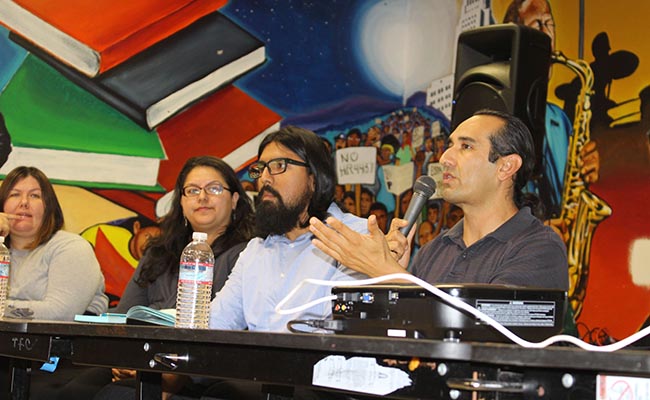
Panelist Jorge Rivera discussed methods to combat gentrification in South Los Angeles based on his experience in Long Beach. | Matt Lemas, Intersections South L.A.
Local advocates against citywide gentrification gathered Oct. 28 for a discussion on methods to combat a $1 billion multi-use development in South Central Los Angeles.
The Reef development, a planned residential, hotel and retail complex to be built in two parking lots just south of Washington Boulevard on either side of Broadway, has many in the community riled up. The proposed luxury site ignites residents’ fears that the development will drastically alter the community make up and increase nearby rents, displacing thousands that have lived in South Central for generations.
“We’re not anti-development,” said Jorge Rivera, a community organizer for Housing Long Beach, an organization focused on improving affordable housing in the city. “We want development, but we want to be able to stay and enjoy that development.”
Hosted by the South Central Neighborhood Council, Wednesday’s panel discussion brought in advocates from Atwater Village, Downtown, Boyle Heights and Long Beach. All groups discussed their own experiences fighting gentrification in their respective locales. The discussion both demonstrated support for the South L.A. community and provided tips for the fight against the Reef development.
About 80 people attended the forum held at the Santee Education Complex. The meeting’s theme centered around concerns that communities have been ignored by private and public investment for decades, leading to their decline. Now, in addition, residents have witnessed a surge in outside development that doesn’t cater to the community make up.
“This community was created by discriminatory practices,” Rivera said. “Government and businesses didn’t invest here…but now they want to ‘improve’ or ‘better’ the community. They’re investing for their own purposes; they don’t take into account the community.”
Panelists stressed that in the fight against private development, those against the Reef should encourage “people power” over money as organizations’ main tool in pushing back.
“Focus on human capital,” said panelist Michelle O’ Grady, member of the Atwater Village Neighborhood Council.
The room seemed to be split on whether or not local residents could trust Councilman Curren Price, who oversees District 9 where the Reef’s project site is located, to speak out against the development.
Price has not taken an official stance on the complex. In the past he has said the Reef could serve as a “lower-cost” alternative to downtown, and on Monday, in light of local complaints on the development’s luxury nature, he told ABC7 the development will be supplemented by two upcoming affordable housing projects “minutes” away from the Reef.
The two additional housing complexes, Price said, would supply hundreds of construction jobs. Current plans for the Reef allot none of its spaces to affordable housing.
Community members cited that construction jobs are only temporary, however, and interpreted Price’s neutrality and comments as damaging and indicative of a pro-developer’s stance.
“Price has not taken a position which it in itself is a decision,” Rivera said, citing that his comments lean more toward approving of the Reef.
“His lack of decision could lead to more homelessness in this city,” added panelist Jose Fernandez, alluding to the potential effects of a displaced community.
In the fight against the Reef, a recent point of contention among residents has been the Nov. 2 deadline for submitting public comment against the development. The South Central Neighborhood Council stressed it has not had not had enough time to review the 3,000 page environmental impact report released in September.
The public comment period has still not been extended. Price has said on record that extensions are only allowed if new information has come forth, which has not been the case.
A Reef representative told Intersections last week that after the public comment period, the company will still be open to hearing local input regarding a community benefits package attached to the project, which among other things, could stipulate how the development’s future tenants hire for their spaces.
Job growth is a common argument for those who favor gentrification, but the panelists warned that the jobs aren’t always given to those in the surrounding community.
“There’s no guarantee the tenets will do local hiring,” said panelist Roxana Alguilar, who worked in job placement during the construction of L.A. Live.
During the event’s Q&A period, there was a virtual agreement among the crowd that, rather than combatting the issue of gentrification on a project-by-project basis, organizations would have to form a unified coalition to fight displacement from both the Reef and in the city at large.
Accompanying that call was one to disregard racial differences and combat developer money with unified human capital.
“If we come together as black and brown…it’s a lot of people power,” said Crystal Mitchell, co-director of the nonprofit business and community development organization Recycling Black Dollars. “They’re expecting apathy.”









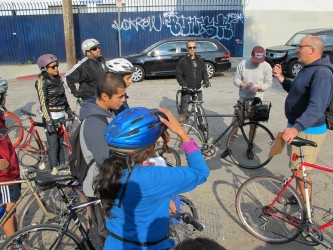
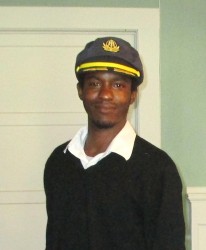
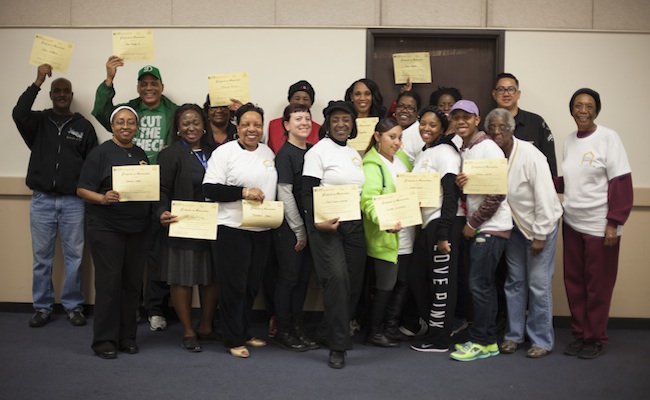

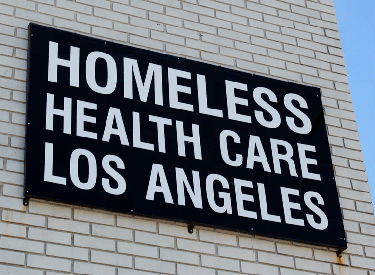 The clients who walk through the doors of Homeless Healthcare Los Angeles share many of the same stories: homeless, jobless, struggling with addictions, estranged from family or friends who could support them through addictions and medical crises.
The clients who walk through the doors of Homeless Healthcare Los Angeles share many of the same stories: homeless, jobless, struggling with addictions, estranged from family or friends who could support them through addictions and medical crises. On the Sunday after Thanksgiving, the temperatures downtown dipped into low 40′s. In Pershing Square, Angelinos glided around a skating rink which is ringed by trees decorated with Christmas lights. Nearby, a small line of L.A.’s down-and-out population formed up for a free dinner. The smell of greens and beans was in the air along with holiday music as a band of volunteers dished out the food. The volunteers brought with them large vats of food, along with hot sauce, plates and water, but one thing they didn’t bring with them is bombs.
On the Sunday after Thanksgiving, the temperatures downtown dipped into low 40′s. In Pershing Square, Angelinos glided around a skating rink which is ringed by trees decorated with Christmas lights. Nearby, a small line of L.A.’s down-and-out population formed up for a free dinner. The smell of greens and beans was in the air along with holiday music as a band of volunteers dished out the food. The volunteers brought with them large vats of food, along with hot sauce, plates and water, but one thing they didn’t bring with them is bombs. Some chapters actually do end up serving meat which is not encouraged because of health and food safety reasons. Aaron Linas, another volunteer, added that some chapters are more overtly political than others. He said some chapters will bring literature when they hand out food, but the L.A. chapter is not as political as those ones.
Some chapters actually do end up serving meat which is not encouraged because of health and food safety reasons. Aaron Linas, another volunteer, added that some chapters are more overtly political than others. He said some chapters will bring literature when they hand out food, but the L.A. chapter is not as political as those ones. Kiera was easily singled out for stardom during her two months living at the Union Rescue Mission on Skid Row. After stunning staff during a public speaking workshop, Kiera was chosen to tell the story of Christmas on behalf of the mission.
Kiera was easily singled out for stardom during her two months living at the Union Rescue Mission on Skid Row. After stunning staff during a public speaking workshop, Kiera was chosen to tell the story of Christmas on behalf of the mission.  Photo courtesy of
Photo courtesy of 





